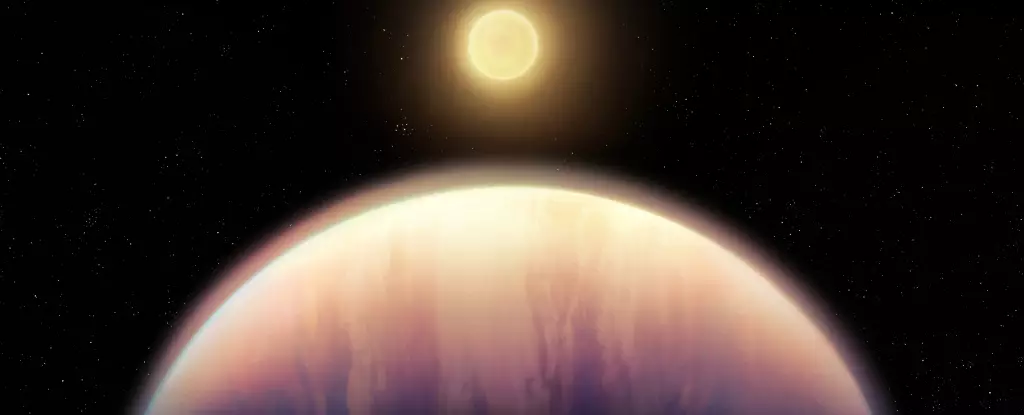The launch of the James Webb Space Telescope (JWST) marked a pivotal moment in astronomical research, particularly in the exploration of exoplanets. Recent achievements have elevated our understanding of planetary atmospheres, allowing scientists to peer into the gaseous envelopes that envelop these distant worlds. By dissecting the light emitted from host stars, they can now discern the chemical compositions of planets orbiting them. One of JWST’s standout accomplishments has been its observations of the HR 8799 system—an intriguing collection of gas giants that adds depth to current models of planetary formation.
The HR 8799 System: An Exoplanetary Marvel
HR 8799 is a fascinating planetary system, illuminating the expanse of our universe while residing a mere 130 light-years away in the constellation Pegasus. What sets this system apart is its youth—only about 30 million years old—and its main-sequence star, which is approximately 1.5 times the mass of our Sun. The striking feature of HR 8799 is its four confirmed gas giants, often referred to as HR 8799 b, c, d, and e, located at varied distances from the star. These gas giants, with masses ranging from 5 to 10 times that of Jupiter, represent one of the first directly imaged multiple-planet systems, showcasing planetary formation in action.
The implications of these observations stretch far beyond HR 8799. Understanding the formation dynamics of such gas giants plays a crucial role in categorizing planetary systems within our galaxy. Traditionally, scientists have theorized two primary processes for the creation of giant planets: core accretion and disk instability. The first posits the gradual accumulation of solid cores, while the second claims a more dramatic formation through the rapid coalescing of gas particles within a cooling stellar disk.
Insights from Carbon Dioxide Detection
The recent findings regarding the presence of carbon dioxide in the atmospheres of the HR 8799 planets have sent ripples through the astronomical community. This discovery suggests that core accretion is not only prevalent but potentially the dominant formation mechanism behind these celestial giants. This is a fascinating revelation, especially when we consider it alongside the formation of our own Solar System, which also likely involved core accretion in the birth of Jupiter and Saturn.
Researchers led by William Balmer from Johns Hopkins University spearheaded the study of these gas giants, expanding our understanding of the diverse universe. Balmer’s team meticulously analyzed the spectroscopic data collected by JWST, revealing significant concentrations of heavy elements in the atmospheres of the HR 8799 giants. Such findings play a crucial role in building a comprehensive picture of how these planetary systems are constructed, providing invaluable context to our position within the cosmos.
Technological Advancements: The Role of JWST in Modern Astronomy
One of the cornerstones of JWST’s success lies in its advanced NIRCam coronagraph technology, which allowed scientists to observe and analyze these dim exoplanets despite their overwhelming proximity to much brighter stars. By blocking out starlight, JWST reveals the faint infrared emissions emitted by planets, offering a glimpse into their gas compositions. This innovative approach allows astronomers to determine the presence of specific atmospheric gases—an essential step in piecing together the planets’ formation history and environmental conditions.
The results gleaned from the HR 8799 observations, along with those of the 51 Eridani system—another focus of JWST—demonstrate the telescope’s capabilities as the preeminent observatory of our time. With nearly 6,000 exoplanets cataloged to date, only a handful have been directly imaged, underscoring the monumental challenge posed by the brightness disparities between planets and their host stars. JWST’s cutting-edge technology opens doors not only to studying exoplanets but also to the broader exploration of the origins of the universe and the structures that compose it.
Through these breakthroughs, JWST is not merely expanding the catalog of exoplanets; it is fundamentally transforming our understanding of the universe and our place within it. As scientists continue to explore the celestial tapestry of other planetary systems, the lines between worlds blur, and our understanding of life, creation, and existence evolves.


Leave a Reply